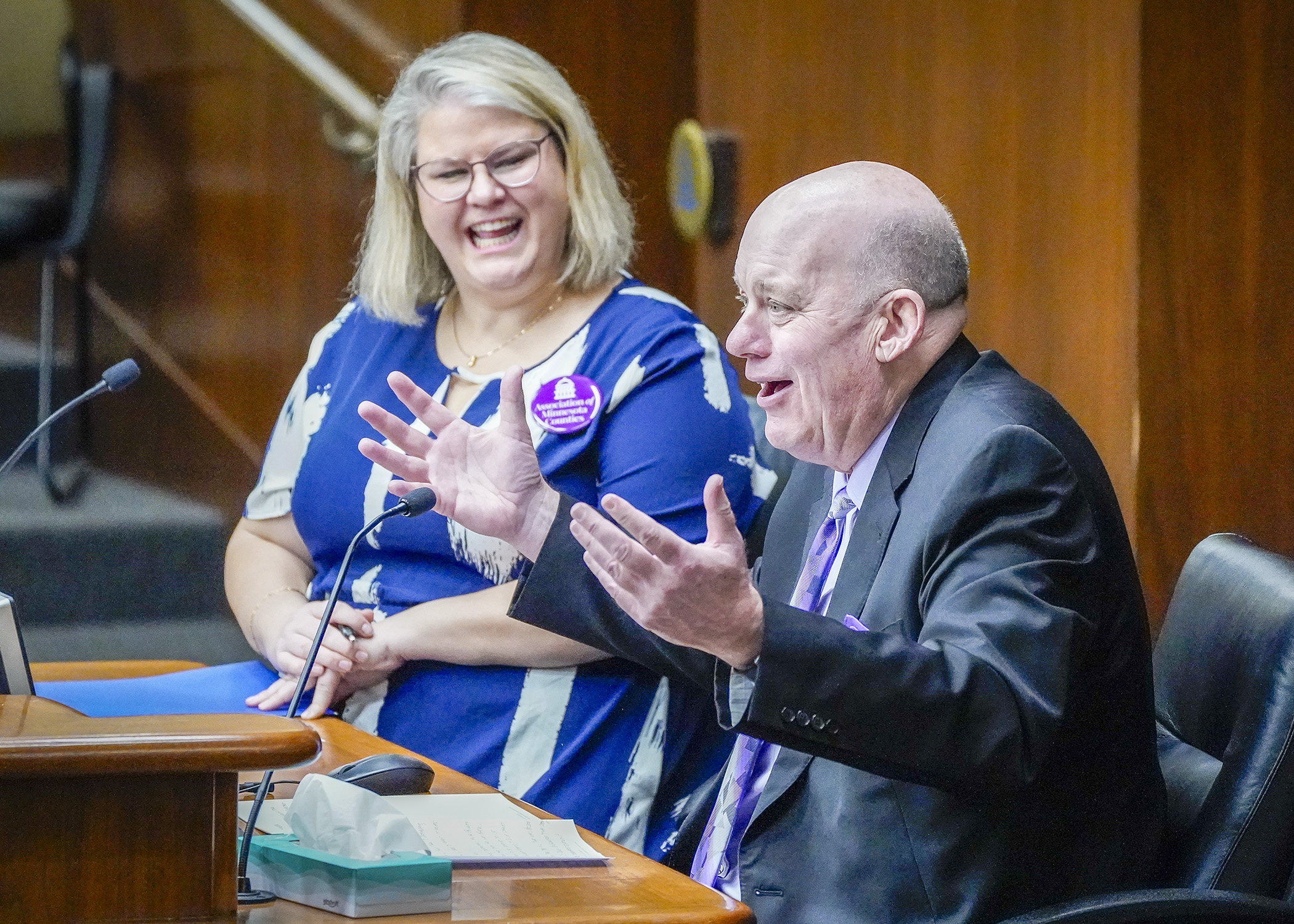Property tax panel debates whether level of aid to cities, counties is enough

They have a term in sports, a “makeup call.” It means that an official has reconsidered whether they were correct in punishing a particular player and has, consciously or not, decided to call something similar on an opposing player in the name of fairness.
To a lot of legislators, sections of the 2023 tax law dealing with local government aid and county program aid were a makeup call.
In 2002, the state was confronting a deficit and used several means to balance the budget. One was removing automatic inflation-related increases from the amount of money the state sent to cities and counties.
Hence, the percentage of a city or county’s budget financed by the state shrunk annually for two decades. To keep up with public works and law enforcement needs, cities and counties increased property taxes on local residents and businesses, the main revenue-raising tool at their disposal.
Then the 2023 tax law brought about increases of $80 million each for the local government aid and county program aid programs. It also developed a new funding mechanism called public safety aid that distributed $300 million in one-time aid to cities, counties, tribal governments and towns with a population over 10,000.
To hear the testifiers at Wednesday’s meeting of the House Property Tax Division tell it, the increases are much appreciated. St. Louis County Commissioner Paul McDonald said that his county “can now work strategically, instead of plugging holes.”
Stearns County Commissioner Tarryl Clark said that her county’s property tax levy only needs to increase 2.71% instead of the originally proposed 6.2%.
But some cities see local government aid as still insufficient to meet their needs, among them St. Paul, whose residents recently voted for a sales tax increase to fund improvements to streets, bridges and parks.
Rep. Dave Lislegard (DFL-Aurora) said the League of Minnesota Cities’ list of the five cities with the largest unmet needs are all in rural areas, with the top four in the northernmost part of the state.
Rep. Pat Garofalo (R-Farmington) voiced displeasure that the public safety aid was a one-time outlay that will expire June 30. The original sponsor of the bill creating that program, Rep. Matt Norris (DFL-Blaine), said he wished it could have been a permanent program, but much of the budget surplus was one-time money.
“Rep. Garofalo’s right that we have to look for permanent funding in the public safety realm,” said Rep. John Huot (DFL-Rosemount), adding that emergency medical services are facing a funding crisis.
“We are just getting back to the level of county and city aid that we had 20 years ago,” said Rep. Aisha Gomez (DFL-Mpls). “You can’t say that you support law enforcement and vote to keep city and county aid at the same level for 20 years.”
Rep. Paul Anderson (R-Starbuck) replied that everyone in the Legislature supports public safety, but that the 2002 decisions about removing inflaters from county and city aid were because of a budget deficit.
“There are realities of finance we have to accept and do what we can do,” he said. “We don’t have an unlimited mountain of money that we can dish out.”
Related Articles
Search Session Daily
Advanced Search OptionsPriority Dailies
Ways and Means Committee OKs proposed $512 million supplemental budget on party-line vote
By Mike Cook Meeting more needs or fiscal irresponsibility is one way to sum up the differences among the two parties on a supplemental spending package a year after a $72 billion state budg...
Meeting more needs or fiscal irresponsibility is one way to sum up the differences among the two parties on a supplemental spending package a year after a $72 billion state budg...
Minnesota’s projected budget surplus balloons to $3.7 billion, but fiscal pressure still looms
By Rob Hubbard Just as Minnesota has experienced a warmer winter than usual, so has the state’s budget outlook warmed over the past few months.
On Thursday, Minnesota Management and Budget...
Just as Minnesota has experienced a warmer winter than usual, so has the state’s budget outlook warmed over the past few months.
On Thursday, Minnesota Management and Budget...